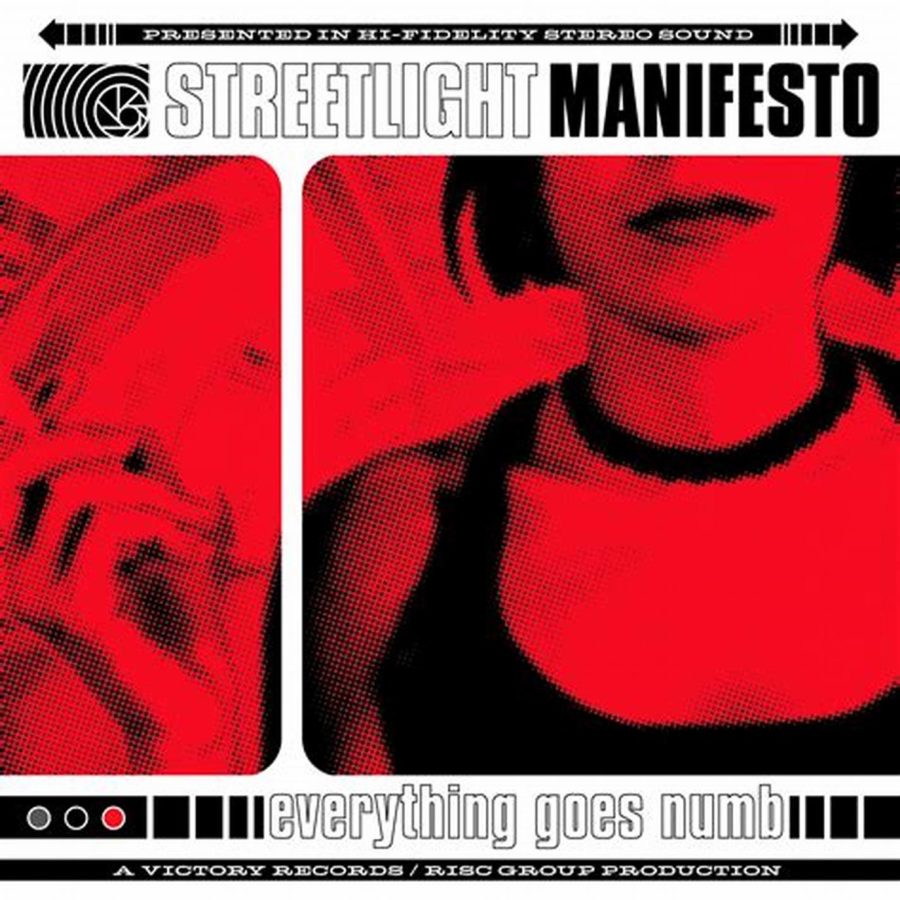Streetlight Manifesto brings ska, community to Chicago
November 25, 2018
The moment Streetlight Manifesto strutted on the stage at the Riviera on Nov. 17, the crowd erupted into euphoria. But beyond the initial ecstasy that occurs at every concert, the moment the band played its first note, it went from euphoria to bedlam—in a good way.
When the band played the first notes of “Everything Went Numb,” the entire first section of the Riviera erupted into a giant and energetic mosh pit. All of the first section of the venue was a mosh pit, and it stayed that way for the entire show.
Streetlight Manifesto, broadly described as Ska Punk—punk rock meshed with the roar of brass instruments—packed an incredibly powerful punch with every song they played. The stop in Chicago was a part of a nation-wide tour celebrating the 20th annivsory of their first album, entitled “Everything Went Numb,” where they played the album in its entirety.
Musically, the band’s performance was excellent. While I’ll delve deeper into the moshing at a later point, I happened to be pushed by the pit to the front of the stage, right by the lead singer during the song “A Better Place, A Better Time.”
And while in the grasps of the pit, it is hard to gauge the energy of the band and the musicality of their performance—the energy of the community is what’s really on your mind—but at the front, I saw the musicality and energy in its full form.
The members of the band, from the singer to the saxophonist, engage with the audience throughout, making this striking eye contact that is enough to enamor one with the music and the performance. But, furthermore, it is difficult to lack energy on stage when you have eight people on stage waving their instruments to music that is, in and of itself, jammed with its own energy.
But more than the musicality, what really struck me about the Streetlight Manifesto set was that the show was not based solely on the audience’s interactions with the band on stage. That was just the start of it. Throughout the set, the concert experience was filled with random moments of connection with total strangers in the audience, which fueled a palpable sense of community in the crowd.
Being in the front section of the venue—the floor was in essence a giant mosh pit the entire show—that sense of community may have been exacerbated for my experience in comparison to those in other regions, but I have to imagine that it seeped it way into the different sections of the crowd.
Moshing, for those unfamiliar with punk lingo, is a dance of sorts where a portion of space in the audience clears out—creating an open space dubbed “the pit”—where members of the audience can go and throw themselves at each other. While it is often seen by outsiders as violent and dangerous, moshing is actually rather for cathartic, if you’re willing to jump in.
I’ve gone to many punk concerts but I have never brought myself to engage. It’s intimidating and, to a certain degree, scary. But the pit at Streetlight Manifesto was different.
At other shows, the moshing can be so aggressive that I fear the skinny, short high schooler I am would come home with more marks and bruises than I could count. But I wouldn’t call the pit at Streetlight aggressive. Weirdly enough, it had this inviting quality to it.
Ska—and Streetlight Manifesto to an even greater degree—is this perfect combination of energy fueled by the disillusionment with life and our society, and the energy is also furthered by the inescapable roar of the trombones, trumpets and saxophones from the stage.
The pit was not just a means of releasing the subdued anger inside us all, but it also exuded this feeling that, “We are here—together for today—so let’s have the time of our life.” We’ll feel the sweat afterwards, but now it’s time to have fun.
Music is said to be this grand connector between people of different backgrounds, and that is undoubtedly true. But concerts are awkward sometimes. You’re around total strangers who, in many cases, the only thing you have in common is that you like the same band. It’s hard to start a conversation naturally, let alone create a connection, based solely on that one fact.
But the Streetlight Manifesto concert was marked by the connection and community that sprouted up within the darkened venue; it was a connection that made it hard to leave at the end of the show.
At the end of the day, the band and the music—all critical components interacting seamlessly at full speed—was just the tool that created this unparalleled audience-oriented connection that I’ve not seen at any other show I’ve been to.



















![Movie poster for '[Rec]" (2007).](https://www.lionnewspaper.com/wp-content/uploads/2023/04/rec-640x900.jpg)



